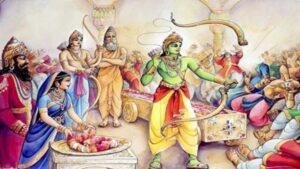India, known for its diverse and picturesque landscapes, has numerous mountains, waterfalls, and rivers that add to its natural beauty. Among these, the rivers of India hold a special place, with the nation often referred to as the “land of rivers,” boasting approximately 200 rivers, both large and small. One of these rivers, the Sarayu River, has a history that dates back to ancient times and is closely intertwined with the narrative of Ayodhya.
This comprehensive article will delve into the fascinating story and history of the Sarayu River. From its mentions in the Vedas and Puranas to its role in the epic Ramayana and its significance in the contemporary context, the Sarayu River has a tale that spans millennia.
The Sarayu in Vedas and Puranas
The Sarayu River finds its earliest mentions in the sacred texts of India, including the Vedas and Puranas. These ancient scriptures provide valuable insights into the river’s significance.
Sarayu in the Ramayana
The epic Ramayana, attributed to the sage Valmiki, prominently features the Sarayu River. It plays a pivotal role in the story of Lord Rama, from his exile to his triumphant return to Ayodhya. Without the Sarayu River, the saga of Ayodhya remains incomplete, as it has silently witnessed Lord Rama’s birth, exile, and return.
The Sarayu’s Identity in Ayodhya
In the Ramcharitmanas by Tulsidas, the Sarayu River is beautifully described as “Avadhpuri mama puri suhavani, Uttar disa baha Sarayu pavani.” This verse portrays Sarayu as the lifeblood of Ayodhya, emphasizing its central role in the city’s identity.

The Origin of the Sarayu River
The origins of the Sarayu River are steeped in mythological significance, as it is believed to have manifested from the tears of Lord Vishnu’s eyes.
Mythological Accounts
According to the Puranas, the Sarayu River originated from the tears of Lord Vishnu during a significant event. When the demon Shankasura stole the Vedas and hid them in the sea, Lord Vishnu assumed the Matsya (fish) avatar, defeated the demon, and retrieved the Vedas. Lord Brahma then collected the tears of joy shed by Lord Vishnu and placed them in the Manasarovar. These tears eventually became the Sarayu River, symbolizing purity and divinity.
Tracing the History of the Sarayu River
The Sarayu River, also known as Sarayu or Sarju, is a tributary of the Sharada River. It originates in the Himalayan foothills, flowing through Uttarakhand and Uttar Pradesh. Its historical significance is deeply rooted in ancient Hindu scriptures and the Ramayana.
A Tributary to the Ganga
Sarayu is among the seven tributaries of the mighty Ganga River, making it a sacred water body with purifying properties. Bathing in the Sarayu River is believed to cleanse one of the physical and spiritual impurities.
Treta Yuga and Ayodhya
In the Treta Yuga, the birthplace of Lord Rama and the capital city of Ayodhya, they were situated along the banks of the Sarayu River. This river’s presence on Earth is believed to have been orchestrated to witness Lord Rama’s heroic deeds and adventures. Its significance extends beyond Ayodhya, encompassing the entire Indian subcontinent.

The Sarayu River in Modern Times
Today, the Sarayu River holds immense importance for millions of people. It remains a center of faith, drawing devotees, saints, ascetics, and spiritual practitioners.
Contemporary Significance
Devotees regularly take ceremonial baths in the Sarayu River during special occasions and religious festivals. The river’s purity and historical importance make it a revered site for spiritual practices and rituals.
Cultural and Environmental Value
Beyond its religious significance, the Sarayu River plays a crucial role in sustaining the ecosystem and culture of the region. It supports agriculture, provides livelihoods, and contributes to the well-being of the people living along its banks.
Conclusion
The Sarayu River, with its ancient origins and storied history, remains an enduring symbol of Ayodhya’s rich heritage and cultural significance. As a witness to the epic tale of Lord Rama, its waters have carried the essence of righteousness and devotion through the ages. Today, the Sarayu River continues to flow, sustaining both the environment and the faith of those who gather along its banks, ensuring that its story lives on for generations to come.



















Add comment